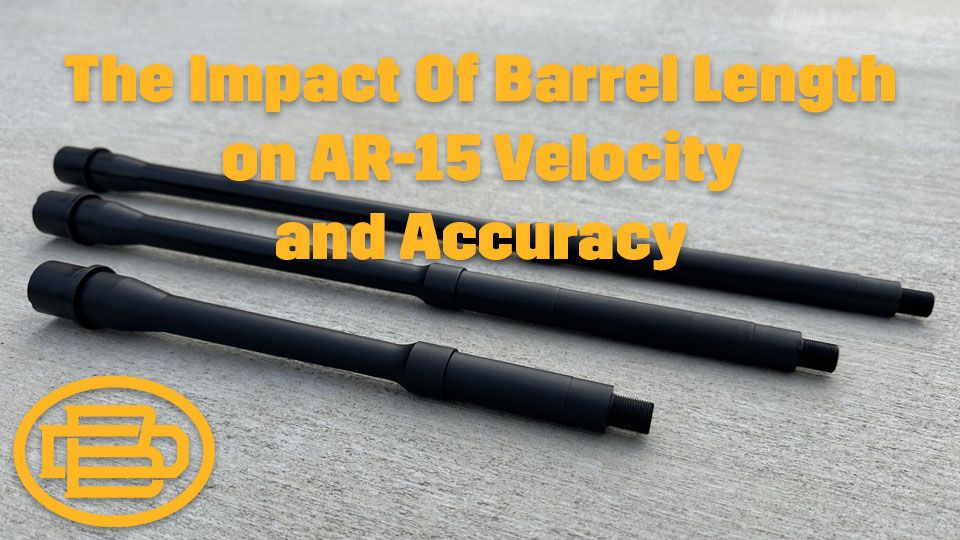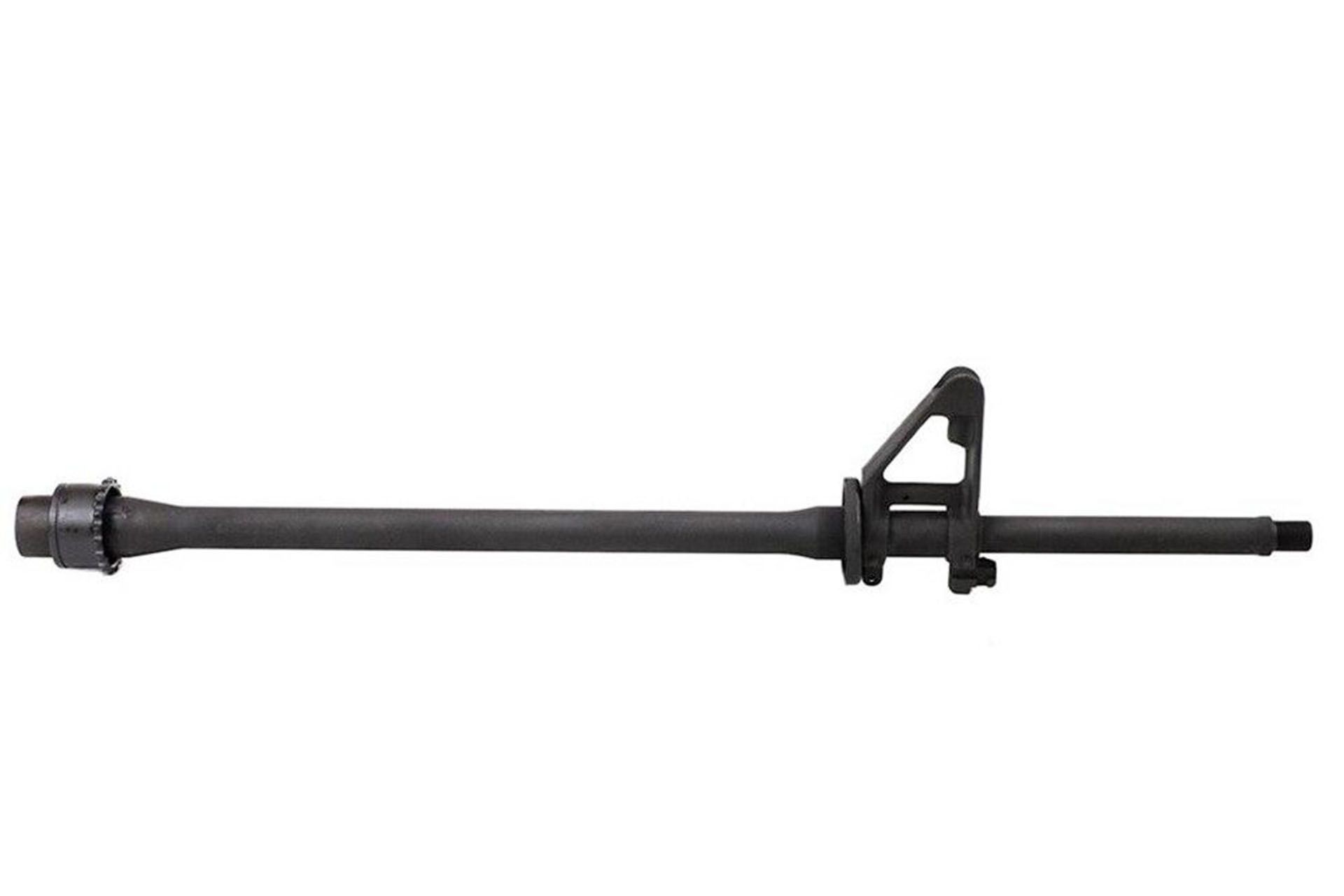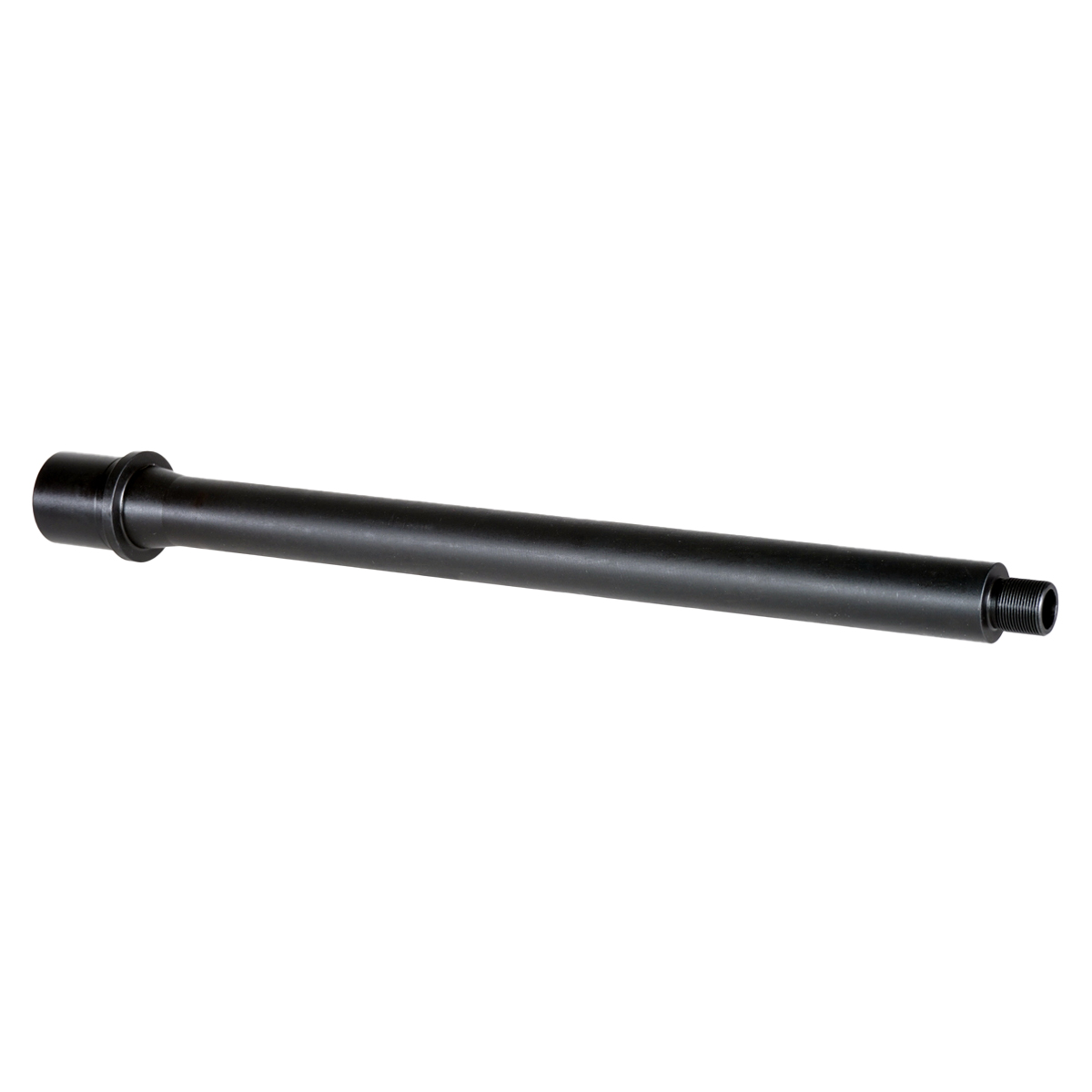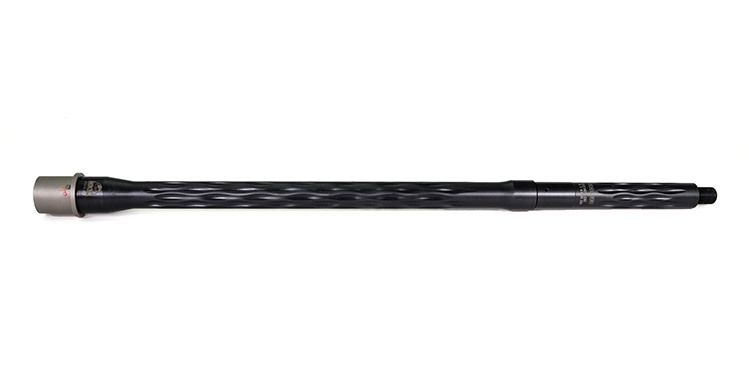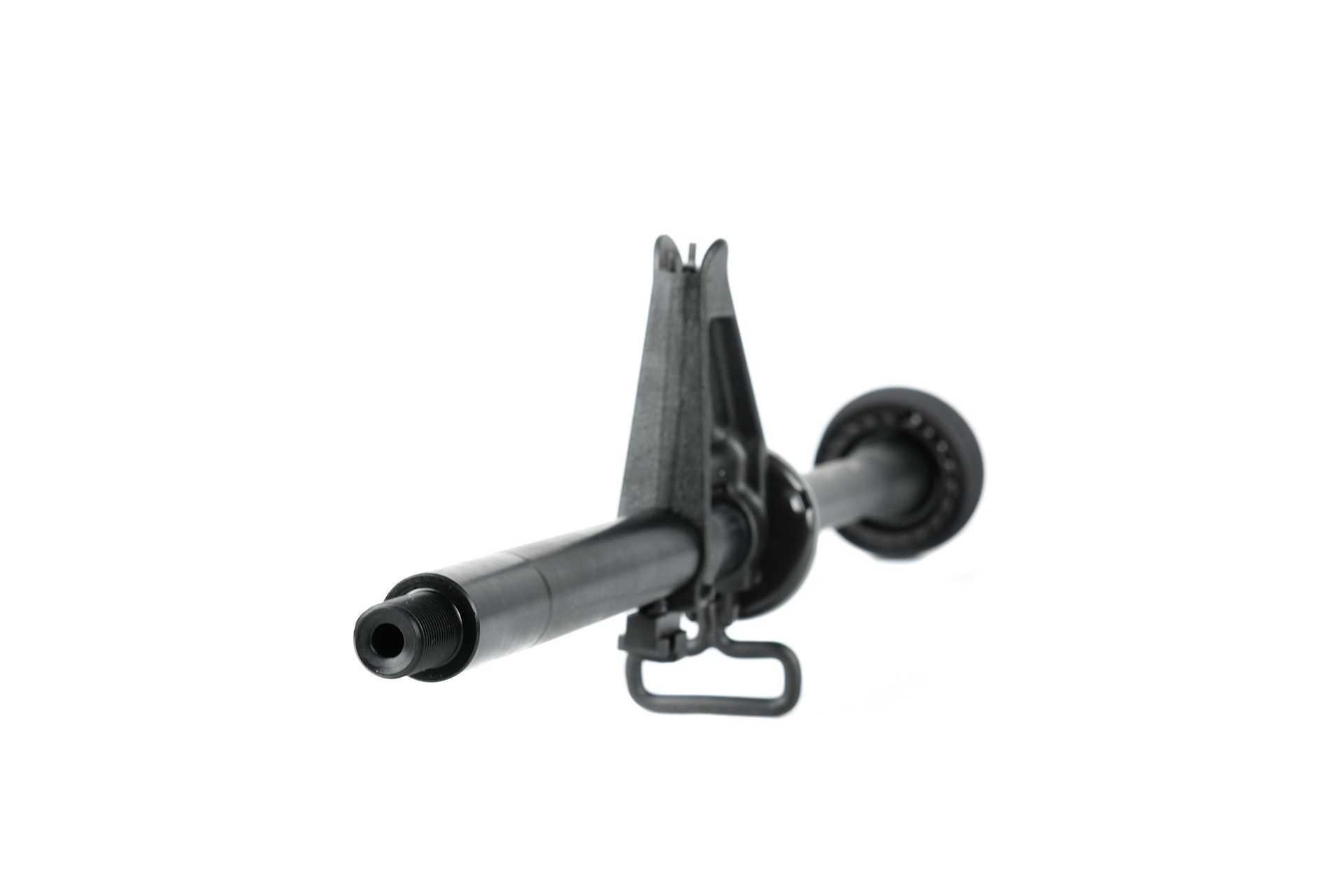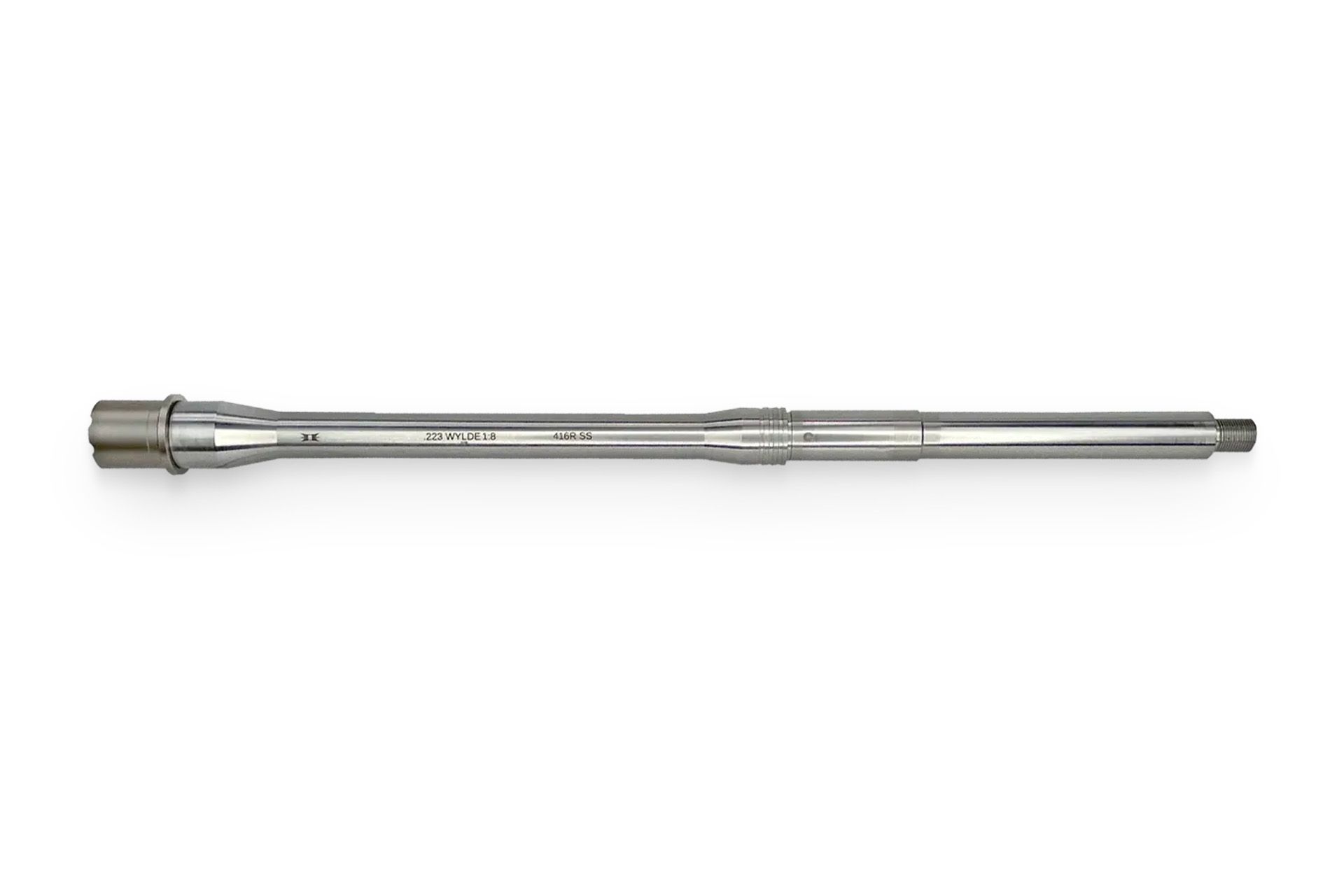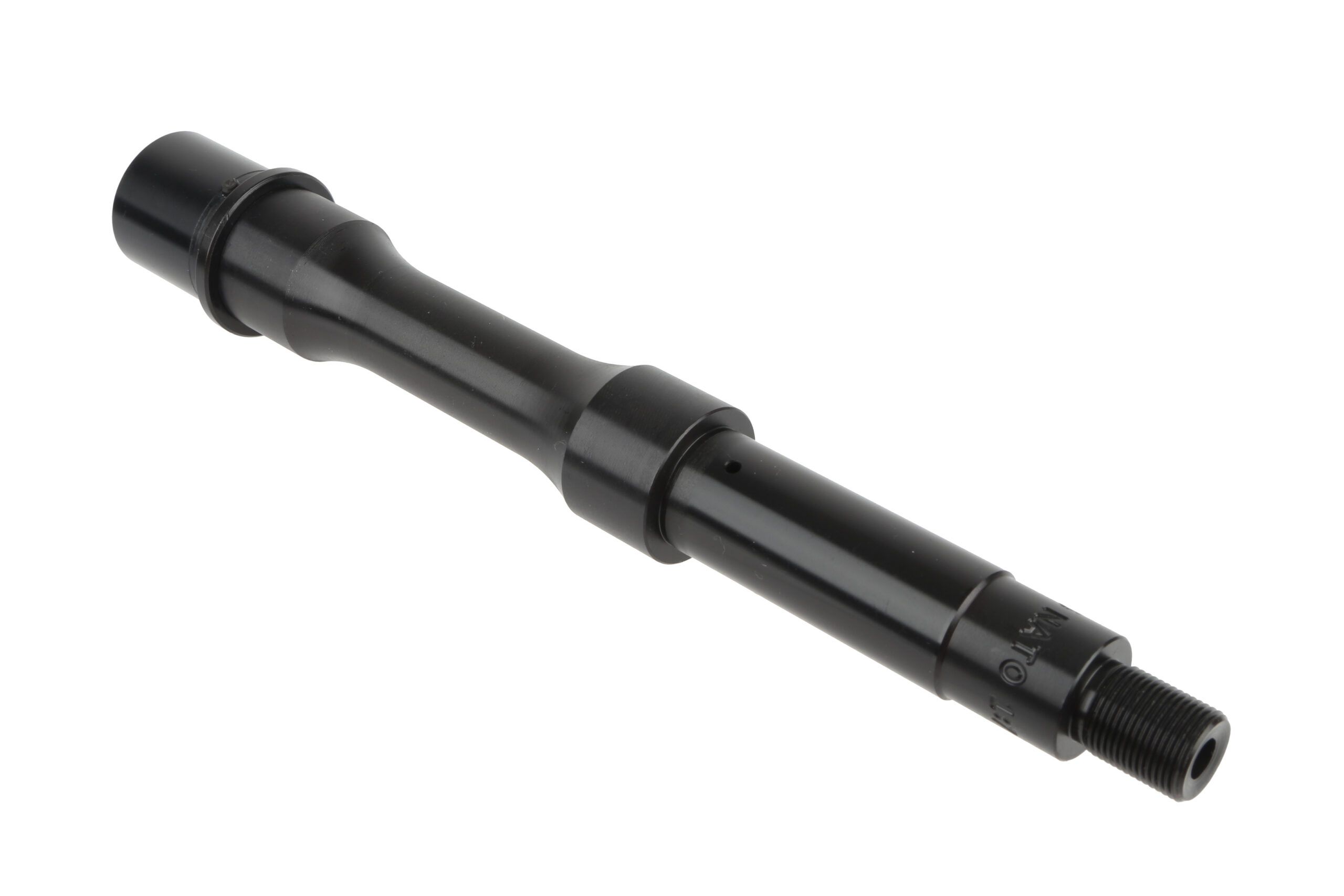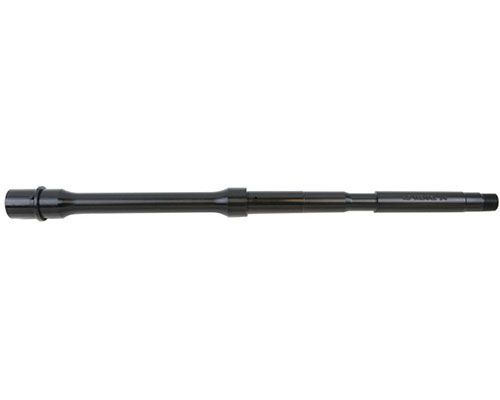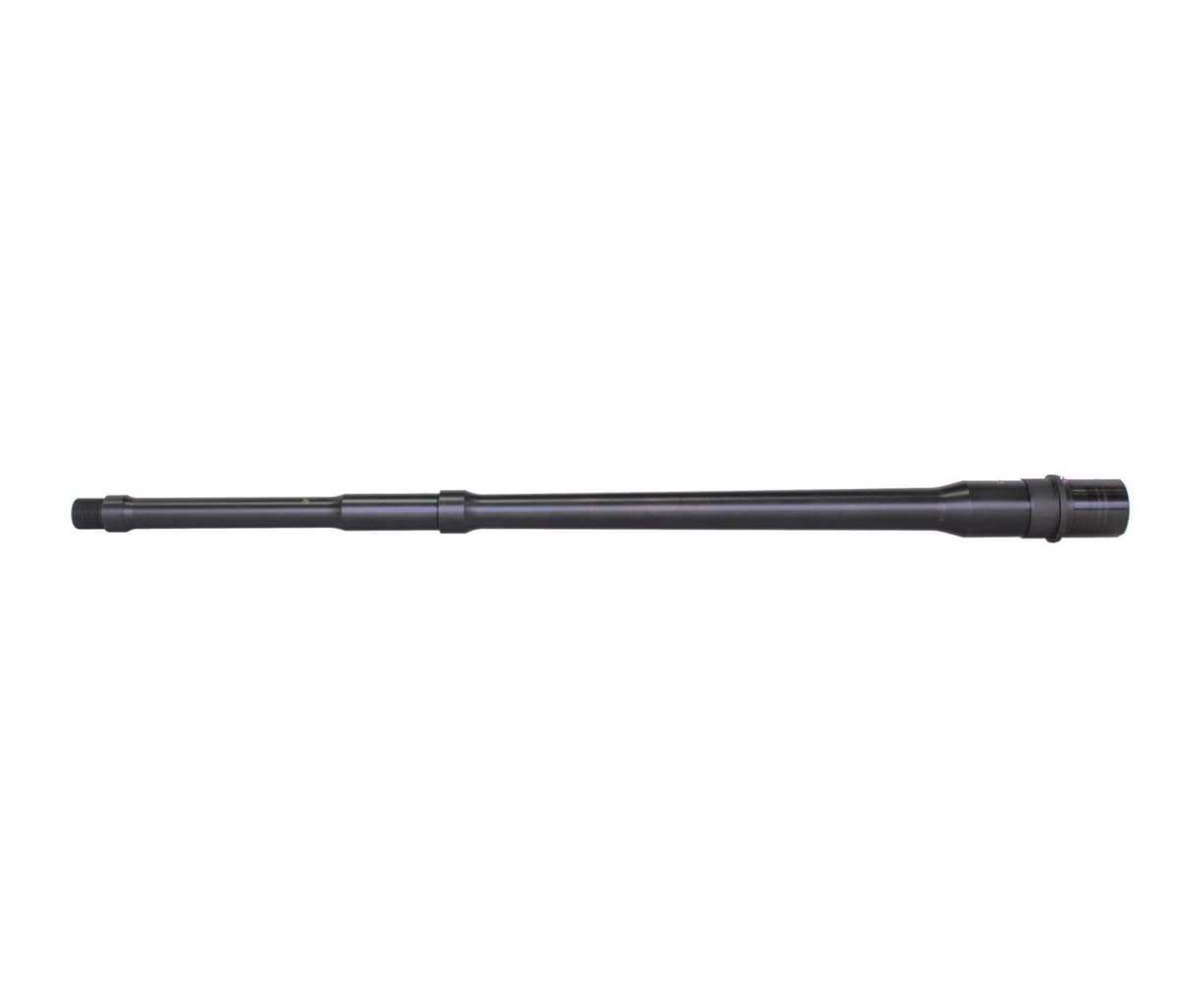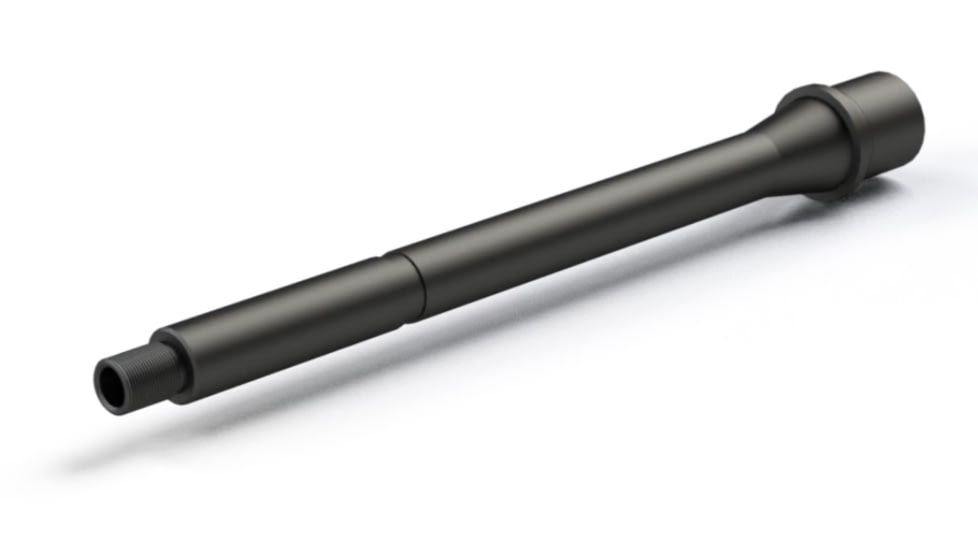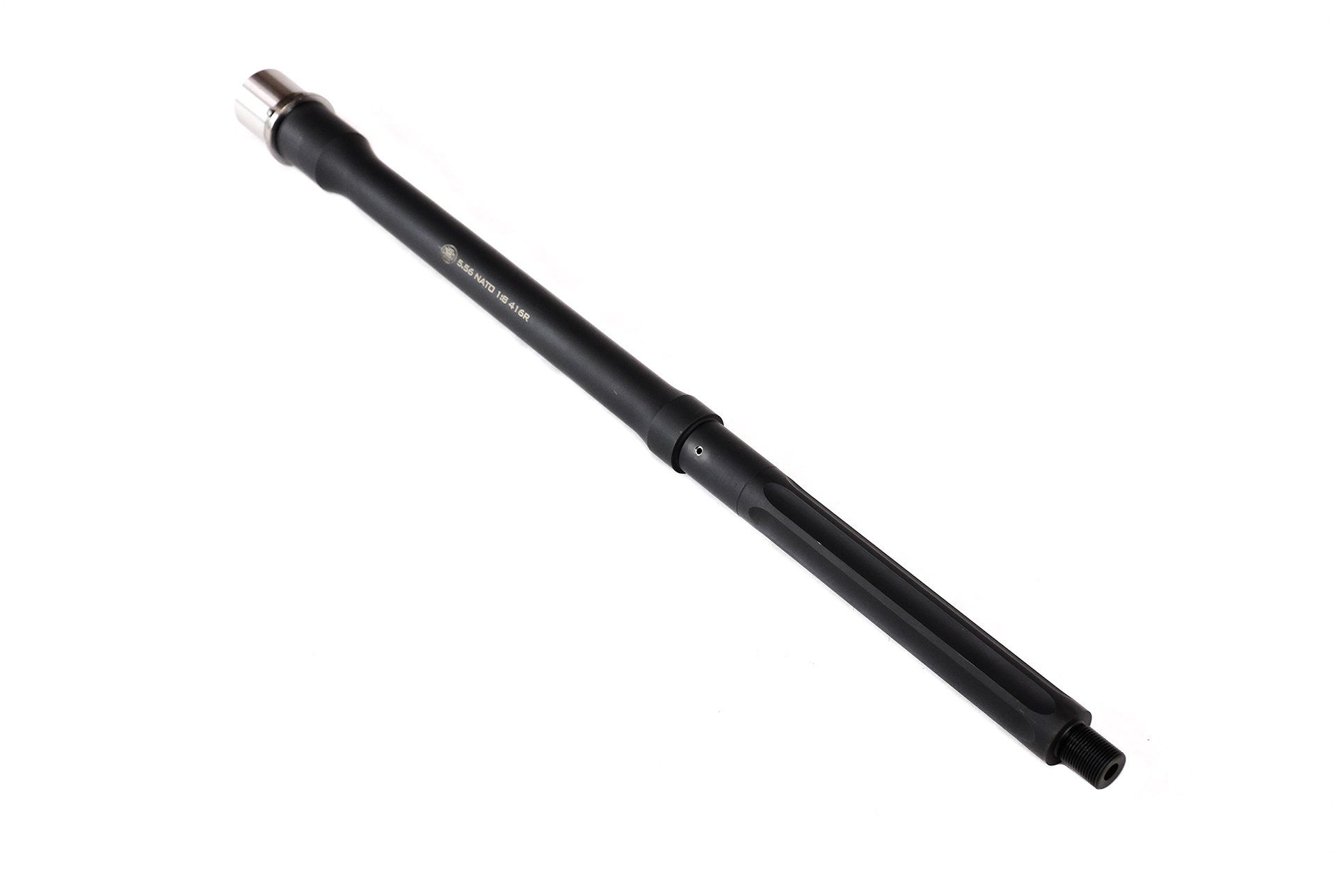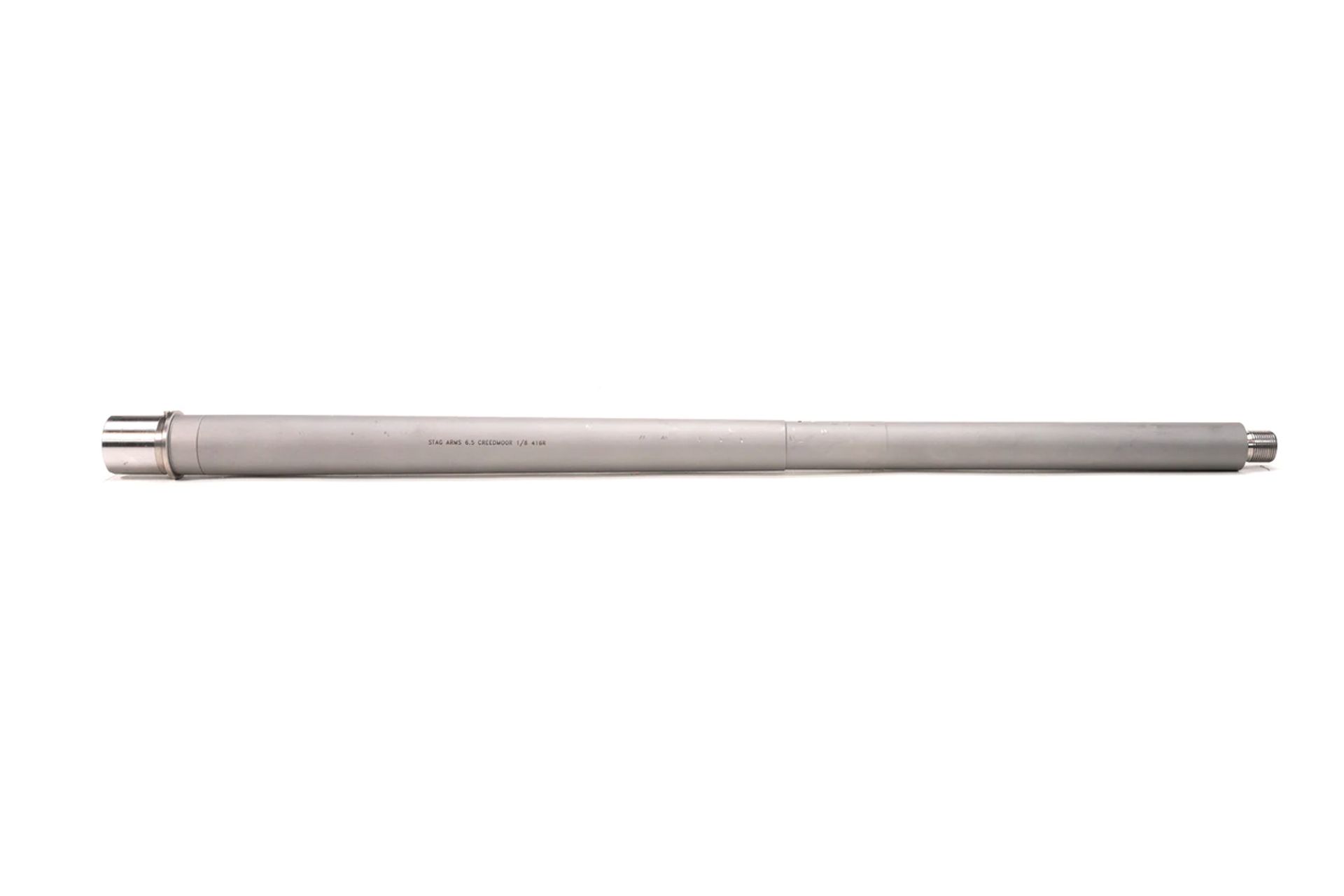AR Parts and Accesories, AR-15, AR-15 Barrels
The Impact Of Barrel Length on AR-15 Velocity and Accuracy
Table of Contents
The barrel of an AR-15 is one of its most crucial components, playing a significant role in the rifle’s overall performance. From accuracy and velocity to handling and reliability, the barrel directly impacts your firearm’s performance in various scenarios. Whether you’re building your rifle for home defense, competitive shooting, hunting, or general-purpose use, selecting the right barrel is essential to ensure it meets your needs.
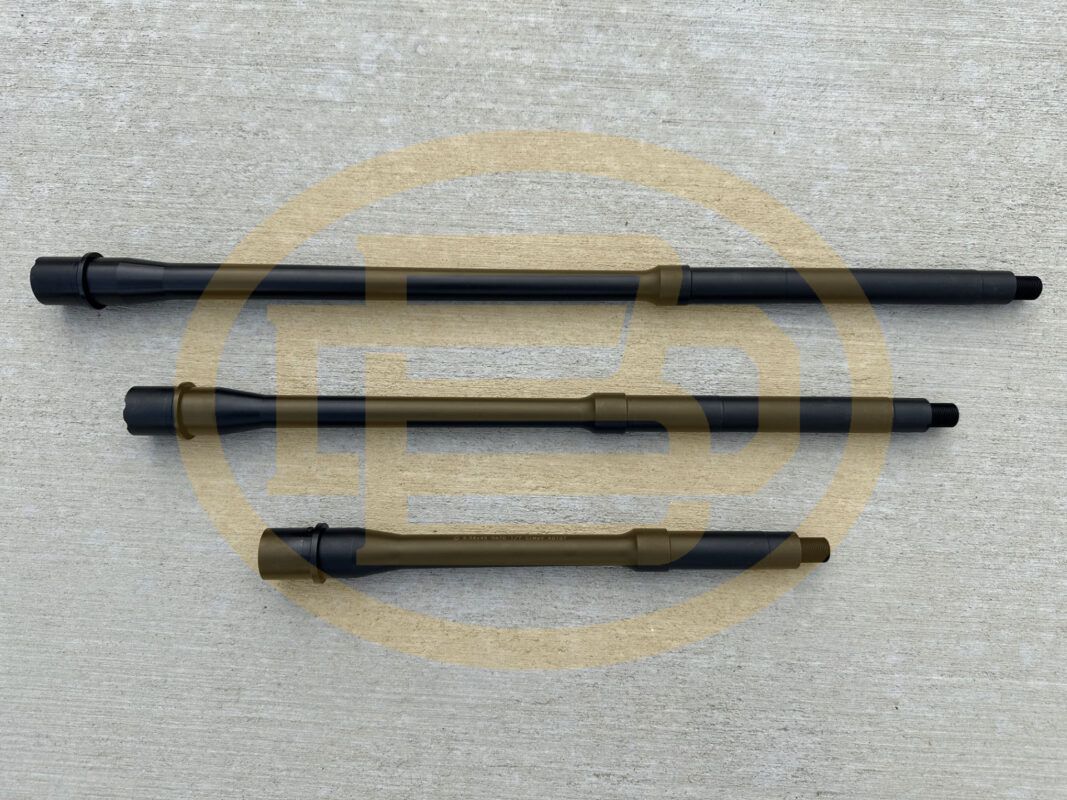
Choosing the ideal barrel can be overwhelming, with so many options on the market, including varying lengths, profiles, and materials. Should you opt for a short barrel for maneuverability or an extended barrel for enhanced velocity? How does the barrel’s design affect your accuracy and recoil control? These are just a few of the questions every AR enthusiast faces.
At Dirty Bird USA, we simplify the process by offering a wide range of AR-15 barrels for sale, suitable for every build and budget. From premium brands to budget-friendly options, you’ll find everything you need to create the perfect rifle. Explore our collection today and take the first step toward optimizing your AR-15’s performance. In this guide, we’ll break down everything you need to know about AR-15 barrels, helping you make an informed decision for your next build.
Why Barrel Length Matters
The length of an AR-15 barrel significantly influences the rifle’s performance, usability, and even compliance with firearm regulations. Whether you’re building a compact gun for close-quarters defense or a precision weapon for long-range shooting, barrel length is critical.
Performance Impacts
Barrel length directly affects bullet velocity, accuracy, and recoil. Longer barrels, such as a 20-inch AR-15 barrel, allow for increased muzzle velocity by giving the expanding gases more time to accelerate the bullet. This makes them ideal for long-range precision shooting. On the other hand, shorter barrels, like those in the 10.5-14.5 inch range, are designed for maneuverability in tight spaces but may sacrifice some velocity.
Usability Considerations
Barrel length also impacts the rifle’s weight, balance, and handling. For example, a shorter barrel is lighter and easier to maneuver, making it popular for home defense or tactical applications. Meanwhile, longer barrels are heavier but provide improved stability and reduced felt recoil.
Compliance and Regulations
In the U.S., federal regulations classify rifles with barrels shorter than 16 inches as Short-Barreled Rifles (SBRs), requiring additional paperwork and compliance with strict laws. Understanding these regulations is vital when selecting your AR-15 barrel.
AR-15 Barrel Length and Velocity
Barrel length is one of the most significant factors affecting bullet velocity in an AR-15. The longer the barrel, the more time expanding gases have to propel the bullet forward, resulting in higher muzzle velocity. Conversely, shorter barrels provide less time for acceleration, which can reduce velocity.
For example, a 20-inch AR-15 barrel is standard for long-range shooters because it maximizes velocity and ensures the bullet maintains sufficient energy over greater distances. In contrast, a 10.5-inch barrel may be preferable for close-quarters scenarios where maneuverability outweighs the need for maximum velocity. However, the trade-off is a noticeable drop in muzzle velocity, which can affect terminal ballistics.
Consider this: a standard 5.56 NATO round fired from a 16-inch AR-15 barrel typically achieves a muzzle velocity of approximately 3,000 feet per second (fps). If fired from a 20-inch barrel, velocity increases to around 3,200 fps, improving accuracy and impact at extended ranges. Conversely, the same round fired from a 10.5-inch barrel might only reach 2,600 fps, which could limit its effectiveness beyond short distances.
AR-15 Barrel Length and Accuracy
A common myth about AR-15 rifles is that shorter barrels are inherently less accurate. This misconception stems from the association between longer barrels and higher velocities, which improve performance at extended ranges. However, barrel length does not directly determine accuracy; it primarily affects velocity and handling.
Shorter barrels, such as 10.5-inch or 14.5-inch barrels, can still deliver exceptional accuracy, especially at shorter distances. For example, in close-quarters battle (CQB) scenarios, the compact size of a shorter barrel allows for quicker handling and faster target acquisition. Short barrels are a reliable choice for home defense or tactical operations where engagements typically occur within 100 yards.
On the other hand, longer barrels, such as a 20-inch AR-15 barrel, are better suited for long-range shooting. The increased length allows for higher muzzle velocities, stabilizing the bullet’s trajectory over longer distances. This makes longer barrels ideal for precision shooting beyond 300 yards.
Ultimately, accuracy depends on various factors, including barrel quality, ammunition, optics, and the shooter’s skill level. Short and long barrels can achieve impressive precision when paired with the right components and used in their intended scenarios. Choosing the right barrel length should align with your specific shooting requirements.
Pros and Cons of Short and Long Barrels
The choice between short and long barrels for an AR-15 often comes down to intended use and personal preference. Each has distinct advantages and trade-offs, making the decision critical for optimizing your rifle’s performance.
Short Barrels (10.5″ – 14.5″)
Advantages:
- Portability: Short barrels are lightweight and compact, making them ideal for carrying over long periods or during dynamic scenarios.
- Maneuverability: Their reduced length is perfect for close-quarters battle (CQB) environments, where tight spaces and fast target acquisition are essential.
- Weight Savings: A shorter barrel reduces the overall weight of the rifle, enhancing control during rapid movements or extended use.
Disadvantages:
- Reduced Velocity: Short barrels don’t provide as much time for expanding gases to accelerate the bullet, leading to lower muzzle velocity.
- Potential for Higher Recoil: The reduced weight and shorter length can amplify felt recoil, especially with powerful ammunition.
Short barrels are excellent for home defense, tactical applications, or other scenarios requiring speed and maneuverability.
Long Barrels (16″ – 24″)
Advantages:
- Increased Velocity: Longer barrels, such as a 20-inch AR-15 barrel, maximize muzzle velocity, making them ideal for long-range precision.
- Stability: The added weight and length improve shot stability, reducing muzzle rise and aiding in follow-up shots.
Disadvantages:
- Heavier Build: Longer barrels add weight, which may become cumbersome during extended use.
- Reduced Maneuverability: Their increased length can make handling in confined spaces challenging.
Long barrels are best suited for long-range shooting, hunting, or precision builds where stability and velocity are priorities. Ultimately, the right choice depends on the rifle’s intended purpose.
Choosing the Right Barrel Length for Your Purpose

Selecting the appropriate barrel length for your AR-15 is crucial to ensure it meets your intended purpose. Different lengths offer unique advantages and are better suited to specific scenarios. Here’s a breakdown of typical applications and the best barrel lengths for each.
Home Defense
. These barrels provide excellent maneuverability in confined spaces, allowing quick target acquisition and improved control during close-quarters engagements. The lightweight design of shorter barrels also reduces fatigue during extended handling, making them a practical choice for defensive situations.
Hunting and Long-Range Shooting
When hunting or engaging in long-range shooting, barrels in the 16-inch- to 20-inch barrels are highly recommended. The increased length enhances muzzle velocity, ensuring the bullet retains energy over greater distances, critical for accuracy and effective performance when taking long shots. For hunters, the added velocity also aids in clean, humane kills.
General-Purpose Builds
A 16-inch barrel is a balanced option for an all-around build. It combines the portability of shorter barrels with the velocity and stability of longer barrels, making it versatile for various applications, from target shooting to tactical use.
When selecting your barrel length, consider your primary use case and shooting environment. Each length serves a specific purpose, and choosing the right one ensures optimal performance for your AR-15.
The Role of Ammunition and Twist Rate
The twist rate of an AR-15 barrel is a critical factor influencing your rifle’s performance, as it determines how the bullet stabilizes in flight. Measured as the distance the rifling takes to complete one full rotation (e.g., 1:7 or 1:9), the twist rate must align with your ammunition choice to optimize accuracy and consistency.
Twist Rate and Ammunition
Heavier bullets, such as 62-grain or 77-grain rounds, require faster twist rates like 1:7 to stabilize correctly. Their increased mass demands more spin to maintain a stable trajectory. Conversely, lighter bullets, such as 55-grain rounds, perform well with slower twist rates like 1:9, as they don’t require as much rotational force. Matching your barrel’s twist rate with your preferred ammunition ensures maximum accuracy and prevents issues like keyholing (when bullets tumble instead of flying straight).
Barrel Extension and Twist Rate
The barrel extension for AR-15 rifles also plays a role in performance. This component connects the barrel to the upper receiver and houses the feed ramps, ensuring smooth ammunition cycling. While the barrel extension doesn’t directly impact the twist rate, its quality and alignment can influence accuracy and reliability. Ensuring a well-made barrel extension supports optimal performance, especially when paired with the correct twist rate for your ammunition.
By understanding the relationship between twist rate, ammunition, and barrel components, you can tailor your AR-15 for precise, consistent shooting across a variety of scenarios.
Common Myths About Barrel Length
Barrel length is a topic of persistent myths, often leading to misconceptions about AR-15 performance. Let’s debunk the two most common ones and address how proper assembly practices, such as barrel nut torque, affect accuracy and reliability.
Myth 1: “Longer Barrels Are Always Better”
While longer barrels, such as a 20-inch AR-15 barrel, can increase muzzle velocity and stabilize shots at longer ranges, they are not always the best choice. Longer barrels add weight and can reduce maneuverability, making them impractical for close-quarters battle (CQB) or home defense. Additionally, the performance gains from added velocity may not be noticeable for mid-range shooting. , making it an excellent all-purpose option.
Myth 2: “Short Barrels Are Inaccurate”
Accuracy depends more on barrel quality, ammunition, and shooter skill than barrel length. Short barrels, such as those in the 10.5 to 14.5-inch range, can be highly accurate in close- to mid-range scenarios. Their reduced length and weight make them ideal for quick handling and target acquisition, which is crucial in tactical or home-defense situations.
The Role of Barrel Nut Torque
Proper barrel nut torque ensures the barrel is securely attached to the receiver, directly impacting accuracy and consistency. Using the correct torque for the AR-15 barrel nut prevents misalignment or loosening, which can degrade performance. Tools like a barrel nut wrench for AR-15 help achieve precise torque values, ensuring a reliable and stable platform.
By understanding these nuances, you can make informed decisions about barrel length and assembly, optimizing your AR-15 for its intended purpose.
Frequently Asked Questions About AR-15 Barrel Length and Performance
To help AR-15 enthusiasts make informed decisions, we’ve compiled answers to the most common questions about barrel length and its impact on rifle performance. These FAQs are structured with in-depth insights while being optimized for SEO using FAQ Schema Markup.
What is the most common barrel length for AR-15 rifles?
The 16-inch barrel is the most popular choice for AR-15 rifles. It strikes an ideal balance between portability and performance, providing sufficient velocity for effective mid- to long-range shooting while maintaining maneuverability for close-quarters scenarios. Its popularity is bolstered by its compliance with federal regulations, eliminating the need for additional paperwork required for shorter barrels.
How does barrel length affect bullet velocity?
Barrel length plays a significant role in determining bullet velocity. Longer barrels, such as 20 inches, allow expanding gases more time to accelerate the bullet, resulting in higher muzzle velocity. For example, a standard 5.56 NATO round achieves approximately 3,200 fps from a 20-inch barrel but drops to around 2,600 fps from a 10.5-inch barrel. This loss of velocity can impact performance at extended ranges, but shorter barrels excel in close-quarters applications where velocity is less critical.
Does a shorter barrel make an AR-15 less accurate?
No, shorter barrels do not inherently compromise accuracy. Accuracy depends on factors such as barrel quality, ammunition, and shooter skill rather than barrel length alone. Short barrels, like those in the 10.5 to 14.5-inch range, can deliver excellent precision within their effective range, making them suitable for home defense or tactical use.
What barrel length is best for home defense?
Shorter barrels, typically 10.5 to 14.5 inches, are ideal for home defense. Their compact size enhances maneuverability in tight spaces, allowing for quicker handling and target acquisition. These barrels are lightweight and well-suited for close-quarters battle (CQB), where engagement distances are minimal.
What barrel length is best for long-range shooting?
For long-range shooting, barrels 20 inches or longer are preferred. The increased length provides higher muzzle velocity and better stability, ensuring consistent accuracy over extended distances. These barrels are commonly used in precision shooting or hunting setups where performance at 300 yards or beyond is essential.
Does barrel length affect the legality of my AR-15?
Yes, barrel length directly affects the legal classification of your AR-15. Federal law mandates that rifles must have a barrel length of at least 16 inches to avoid classification as a Short-Barreled Rifle (SBR). SBRs require additional paperwork, including a tax stamp and compliance with strict regulations. Always verify state and federal laws before making modifications to your rifle.
What is the ideal barrel length for a general-purpose AR-15?
A 16-inch barrel is widely considered the ideal choice for general-purpose AR-15 builds. It offers versatility for various applications, from target shooting to tactical use, combining the portability of shorter barrels with the performance benefits of longer barrels.
How does barrel length affect recoil?
Shorter barrels tend to produce slightly more felt recoil due to their reduced weight and lower velocity. Conversely, longer barrels, like a 20-inch barrel, add stability and weight, which can dampen recoil and improve shot-to-shot consistency. However, the difference is often minimal and can be mitigated with proper shooting technique and accessories like muzzle devices.
Can I use the same ammunition for different barrel lengths?
Yes, the same ammunition can be used across different barrel lengths, but its performance will vary. Longer barrels maximize velocity and energy, while shorter barrels may reduce velocity, impacting terminal ballistics. Matching the ammunition to the barrel’s twist rate is critical for optimal performance regardless of length.
Does a longer barrel improve performance with a suppressor?
Yes, longer barrels can enhance performance with a suppressor. The increased length allows more complete powder burn before the bullet exits, reducing muzzle flash and noise. However, pairing the right suppressor with the appropriate barrel length is essential to optimize performance while maintaining balance and handling.
Conclusion: Finding the Perfect AR-15 Barrel for Your Build
Choosing the right barrel for your AR-15 is critical in optimizing your rifle’s performance. Whether you need a short barrel for home defense, an extended barrel for precision shooting, or a balanced option for general-purpose use, understanding the nuances of barrel length, velocity, and twist rate ensures you’ll build a rifle tailored to your needs. By considering factors like accuracy, recoil, and compatibility, you can make an informed decision that enhances your shooting experience.
Dirty Bird Industries offers a wide selection of high-quality AR-15 barrels for sale to suit every application and budget. From lightweight barrels for maneuverability to long-range options for superior precision, our inventory features products from trusted brands designed to meet your demands. Visit our website today to explore our AR-15 barrel options and find the perfect component to elevate your rifle’s performance.
Take the next step in building or upgrading your AR-15 and ensure your rifle is equipped with a barrel that delivers the accuracy, reliability, and versatility you deserve!
For Additional Resources: www.arbuildjunkie.com
